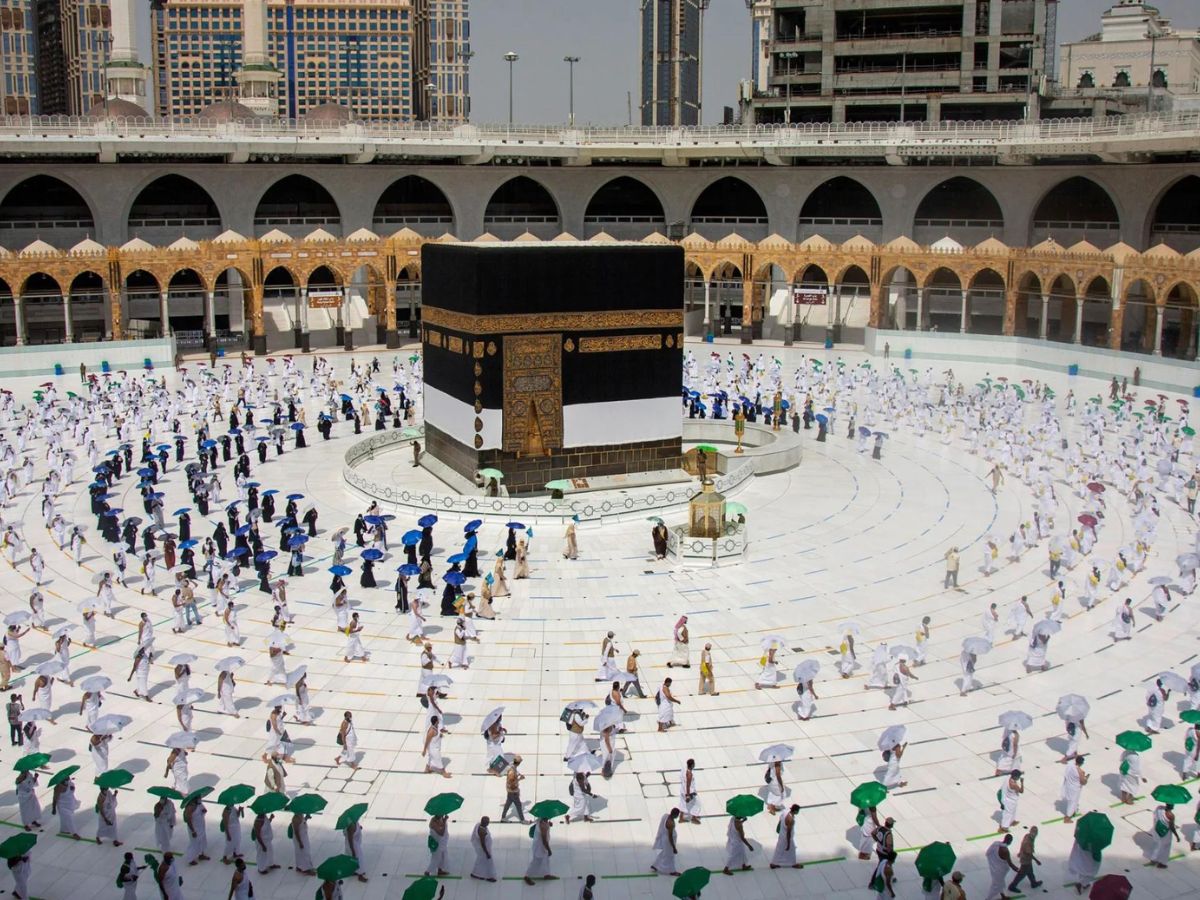What are the Core Rituals To Perform Umrah?

Contents [show]
Embarking on the sacred Umrah journey is a profound and personal experience for every Muslim, a voyage to connect with Allah (Subhanahu Wa Ta’ala Glory to him, the exalted) and seek inner purification. It is a soulful pilgrimage to the Holy Kaaba, the embodiment of God’s sacred presence. Unlike the obligatory Hajj, Umrah holds the flexibility of being performed at any time of the year, offering a unique opportunity for spiritual renewal. Pilgrims, guided by faith, engage in rituals designed to cleanse their souls, hearts, minds, and bodies from past transgressions. This sacred sojourn, facilitated by Umrah flights, signifies a humble visit to the Sacred House of God. It’s a timeless endeavour where believers commune with divine tranquillity, aspiring to stand distinguished on the awaited Resurrection day. Here’s a list of the most significant rituals for perform Umrah.
Ihram From Miqat- The Intention To Perform Umrah:
Before pilgrims venture into the revered Al Masjid Al Haram in Makkah and embark on their Umrah pilgrimage, they must attire themselves in Ihram, designating the sacred boundary of the city. The five distinct Miqats areas within the Haram boundary include Dhu’l Hulaifah, Al-Juhfah, Qarn-al manazil, Yalamlam, and Dhat `Irq. Each Miqat corresponds to pilgrims arriving from different regions, emphasizing the inclusivity of this spiritual journey. Wearing Ihram signifies a solemn commitment, blending Niyyah, the internal intention for worship, and Talbiyah, a special prayer uttered in supplication. This ritual preparation precedes the sacred pilgrimage to Makkah’s heart, underscoring the significance of spiritual readiness.
Tawaf- The Circumambulation Of Holy Kaaba:
Following the sacred act of assuming Ihram, the pilgrim, known as the Muhrim, engages in the profound ritual of Tawaf within Al Masjid Al Haram. Here, the Muhrim halts the recitation of Talbiyah, commencing seven circumambulations around the Holy Kaaba. This symbolic journey mirrors the celestial realms where angels circumambulate Allah’s house, al-Bayt al-Ma’mur. Men, during Tawaf, reveal their right shoulder by draping the Rida beneath their right arm and across their left shoulder. Beginning at the Black Stone, the circumambulation concludes with a heartfelt supplication, affirming the worship’s sanctity and the seeker’s yearning for closeness to Allah.

Prayers During Tawaf:
During Tawaf, specific prayers are not mandate, but a range of recommend supplications exists. Pilgrims have the flexibility to incorporate their daily prayers or communicate with Allah in their preferred language and personal manner. The act of Tawaf embraces individual expressions of devotion, allowing worshippers to connect with the divine through their unique spiritual conversations. This inclusive approach encourages a deeply personal and meaningful connection with Allah during the sacred ritual, fostering a sense of authenticity in the pilgrim’s worship experience.
Sai; Seven Rounds Between Safa and Marwah in Worship:
Following the completion of Tawaf, the sacred act of Sa’i unfolds, entailing seven rounds between Safa and Marwah. Pilgrims, fueled by profound devotion, ascend Safa to witness the Holy Kaaba, then descend, moving towards Marwah. Reciting ‘Subhan Allah’ and nearing the green pillars, this ritual repeats seven times, with each round spanning at least 450 meters. To conclude Sa’i, male pilgrims trim or shave their hair, while women cut theirs by half or less. This symbolic journey mirrors the steadfastness and determination of Hagar, resonating with the essence of pilgrimage and spiritual renewal.
Zamzam:
Following Salah and heartfelt Dua, indulge in the abundant Zamzam water, conveniently accessible in the Tawaf area and various fountains within Masjid al-Haram. The entrance to the historic Zamzam well has been thoughtfully cover to enhance the Tawaf experience. As Prophet Muhammad ﷺ stated, “The water of Zamzam is for whatever purpose it is drunk for.” Before sipping this sacred water, express an intention for your desires—be it good health, worldly success, or protection from the trials of the afterlife. While standing facing the Kaaba, say, Bismillah, pause thrice for a breath and conclude with Alhamdulillah. Optionally, apply it to your face and body for added blessings.
Istilam of the Hajar al-Aswad:
Before Sa’i, it is recommended to perform Istilam of Hajar al-Aswad once more, marking the ninth time, following the eight occurrences during Tawaf. While the omission is permissible if challenges arise, such as crowding or fatigue hindering a return to the Hajar al-Aswad line, Istilam can be conducted anywhere in Masjid al-Haram, as long as the pilgrim faces Hajar al-Aswad. This flexibility ensures adherence to the Sunnah while accommodating practical considerations during the sacred rituals.
Proceed Towards Safa And Marwa:
Head towards the Safa and Marwah hill within Masjid al-Haram, aligned with Hajar al-Aswad. Look for signs guiding your way. Upon reaching Safa, face the Kaaba’s direction, raising your hands in supplication. Even if your view of the Kaaba is obscure, estimate its location and align yourself accordingly. Unlike Tawaf, avoid raising your hands to earlobes or gesturing towards the Kaaba. You may express Takbir (Allāhu akbar), Tahlil (lā ilāha illā Allāh), and send Salawat upon the Prophet during this sacred moment of connection with Allah.
Conclude with a heartfelt Dua and perform two Rakahs of Nafl Salah in Masjid al-Haram after Sa’i for a meaningful connection with Allah.



